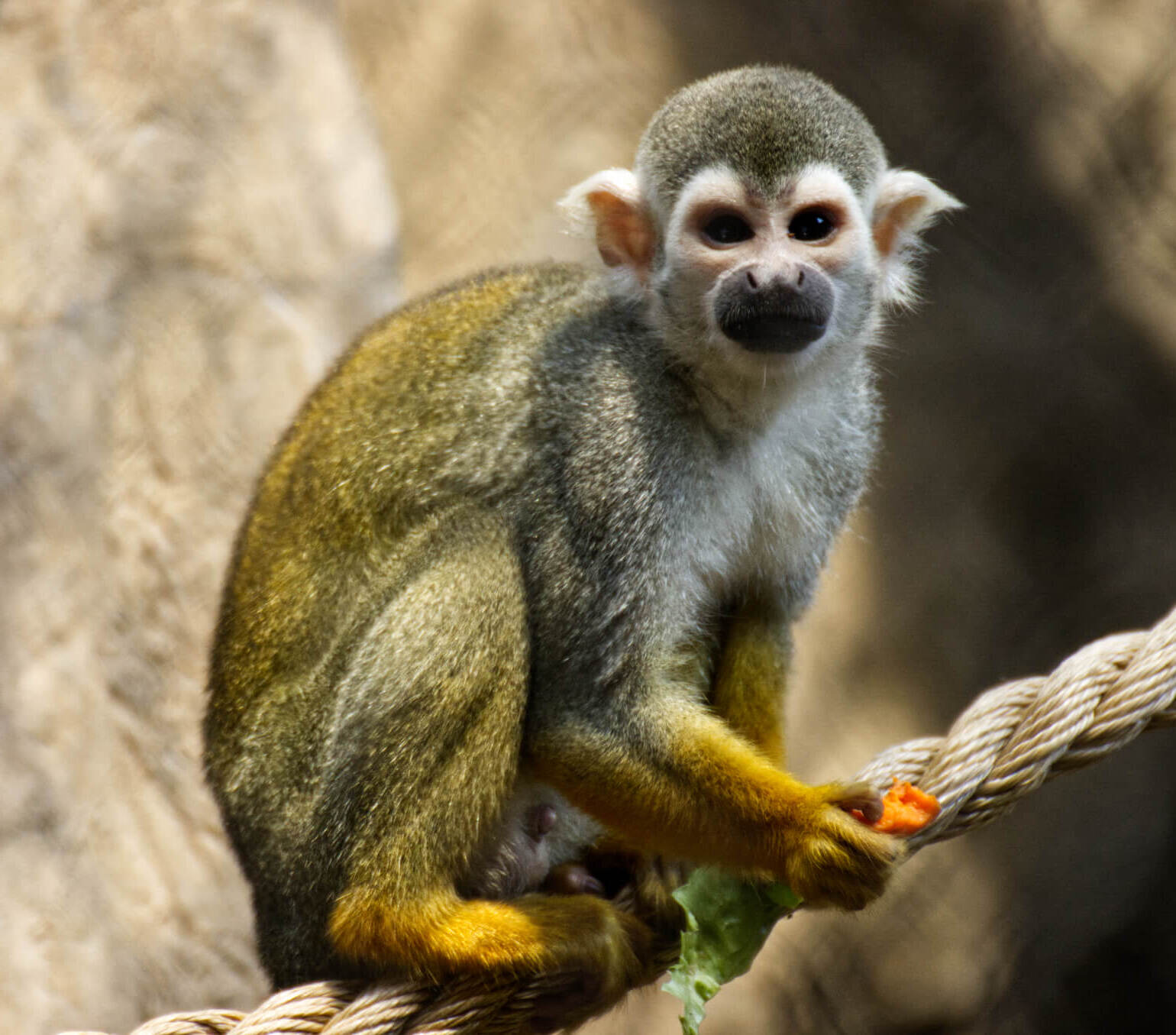
Ever wondered about the tiny acrobats of the animal kingdom, known for their playful antics and expressive faces? Yes, I'm talking about squirrel monkeys! These pint-sized primates are not just adorable but are packed with fascinating traits that set them apart in the wild. From their vibrant social lives to their unique adaptations, squirrel monkeys are a testament to nature's creativity. But what exactly makes these creatures so intriguing? Squirrel monkeys have a set of 12 remarkable facts that will not only pique your curiosity but also deepen your appreciation for these nimble inhabitants of the tropical forests. Ready to leap into the world of squirrel monkeys and uncover what makes them truly special? Let's swing through the branches of knowledge together and discover the wonders of these captivating creatures!
Key Takeaways:
- Squirrel monkeys are social and intelligent creatures, living in large groups with complex hierarchies. Their varied diet and keen sense of smell showcase their adaptability in the wild.
- Conservation efforts are crucial for the survival of squirrel monkeys, as they face threats from habitat destruction and the illegal pet trade. Protecting their natural habitats is essential for their well-being.
Understanding Squirrel Monkeys
Squirrel monkeys, with their vibrant personalities and distinctive features, are among the most intriguing primates in the tropical forests of Central and South America. These small monkeys are known for their keen intelligence and complex social structures, making them fascinating subjects of study for scientists and animal lovers alike.
-
Squirrel monkeys are part of the genus Saimiri, which is derived from the Tupi language of Brazil, meaning "small monkey." This name perfectly encapsulates their petite stature.
-
They are incredibly agile and spend most of their life in the treetops. Their long, bushy tails, which can be as long as their bodies, help them balance while navigating through the dense foliage.
Their Social Structure
Squirrel monkeys are not solitary creatures. They thrive in large groups, which can sometimes consist of up to 500 members. These groups are known as troops.
-
Within these troops, there's a complex hierarchy that determines access to food and mates. Interestingly, female squirrel monkeys often hold higher ranks than males, which is not common among primates.
-
Communication is key in their social interactions. They use a variety of vocalizations, facial expressions, and body postures to convey messages to one another.
Diet and Nutrition
What squirrel monkeys eat plays a significant role in their daily activities. Their diet is quite varied and reflects their adaptability to different environments.
-
Primarily, they feast on fruits and insects. However, they are also known to eat seeds, leaves, and even small vertebrates when the opportunity arises.
-
Their foraging behavior is fascinating. Squirrel monkeys have been observed using their keen sense of smell to locate fruit hidden among the dense foliage, showcasing their intelligence and adaptability.
Reproduction and Lifespan
Understanding the reproductive habits and lifespan of squirrel monkeys offers insight into their survival strategies in the wild.
-
Females typically give birth to a single offspring after a gestation period of about 150 to 170 days. This relatively long gestation period for their size results in well-developed and independent babies.
-
In the wild, squirrel monkeys can live up to 15 years, but in captivity, with proper care, they can live even longer, sometimes surpassing 20 years.
Conservation Status
Despite their adaptability, squirrel monkeys face threats from habitat destruction and the illegal pet trade.
-
Currently, most species of squirrel monkeys are listed as of "Least Concern" by the IUCN Red List, but their populations are decreasing. Conservation efforts are crucial to ensure their survival.
-
Habitat loss due to deforestation is one of the biggest threats to their existence. Protecting their natural habitats is essential for their conservation.
Squirrel Monkeys and Research
Squirrel monkeys have contributed significantly to scientific research, particularly in the fields of neuroscience and behavior.
-
Due to their similar brain structure to humans, they have been involved in various studies, including those related to Parkinson's disease and the effects of space travel on the brain.
-
Their social behaviors and communication patterns have also provided valuable insights into the social dynamics and evolution of primates, making them invaluable to the scientific community.
A Glimpse into Squirrel Monkey Secrets
Squirrel monkeys, with their vibrant personalities and complex behaviors, offer a fascinating glimpse into the animal kingdom's diversity. These little primates, thriving in the lush canopies of Central and South America, play crucial roles in their ecosystems. Their diet, mainly fruits and insects, helps in seed dispersal and controls insect populations, maintaining ecological balance. Social creatures by nature, squirrel monkeys demonstrate the importance of community and social bonds in survival and well-being. Research on their communication and social structures provides insights into primate evolution, including our own. Protecting their habitats is vital for preserving this incredible species and the biodiversity of rainforests. As we've journeyed through the world of squirrel monkeys, it's clear they're not just another animal; they're a key piece of the ecological puzzle, deserving our admiration and conservation efforts.
Frequently Asked Questions
Was this page helpful?
Our commitment to delivering trustworthy and engaging content is at the heart of what we do. Each fact on our site is contributed by real users like you, bringing a wealth of diverse insights and information. To ensure the highest standards of accuracy and reliability, our dedicated editors meticulously review each submission. This process guarantees that the facts we share are not only fascinating but also credible. Trust in our commitment to quality and authenticity as you explore and learn with us.


